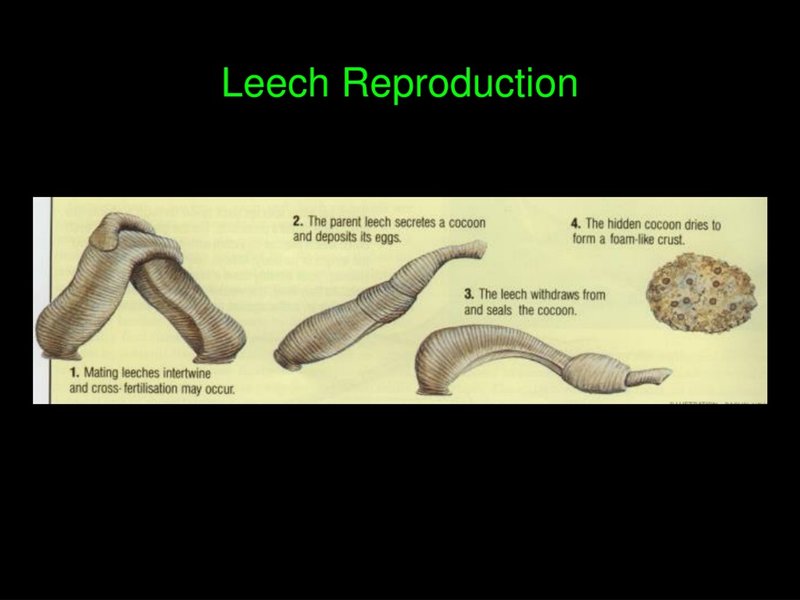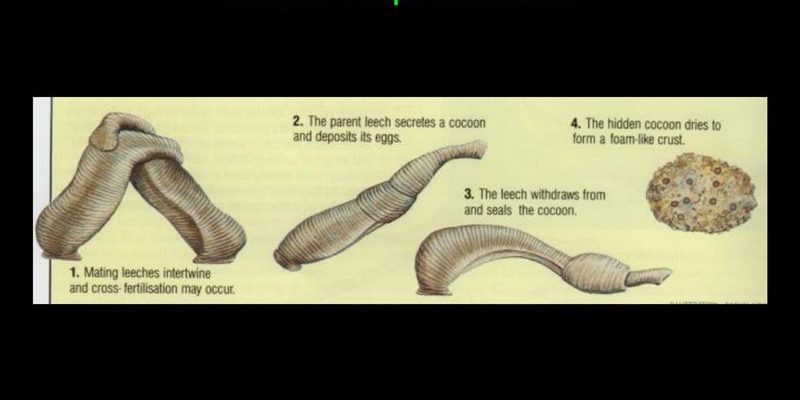
Think of leeches as the unsung heroes of their ecosystems. They’re more than just bloodsuckers—they play a vital role in the environment by breaking down organic matter and serving as a food source for various animals. Understanding how they mate, lay eggs, and develop into larvae gives us a deeper appreciation for these creatures. So, grab your favorite drink and let’s dive into the captivating world of leech reproduction, exploring everything from their courtship behaviors to the delicate eggs they lay.
How Do Leeches Mate?
Mating in leeches isn’t your everyday romance story. These critters are hermaphrodites, which means they have both male and female reproductive organs. When two leeches get together, they engage in a unique mating ritual. They might seem a bit awkward at first, wriggling around in what looks like a dance, but this is a crucial part of their courtship.
During mating, leeches align themselves ventrally, or belly to belly, and exchange sperm. This process typically lasts several hours. Here’s the interesting part: each leech can store the sperm they receive from their partner for later use. So, they’re basically saving up for a rainy day! This strategy increases their chances of successful reproduction, especially in environments where mates might not always be easy to find.
Once the exchange is complete, they separate and get back to their leechy lives, but the real magic has only just begun. The sperm will fertilize the eggs, leading to the next stage of their life cycle. Isn’t nature fascinating?
Leech Egg Laying: Where Do They Lay Their Eggs?
After the thrilling mating escapade, it’s time for leeches to lay their eggs. But where do they do this? Leeches typically nest their eggs in protective cocoons. These cocoons are often found attached to submerged objects like rocks or vegetation, providing a safe haven for the developing embryos.
The egg-laying process can vary among different leech species, but many will produce a soft, gelatinous casing that holds multiple eggs. The number of eggs can range from a handful to several dozen, depending on the species. Once the eggs are laid, the leech will often abandon them. It’s like they’re saying, “Okay, kids, you’re on your own now!”
These eggs can take a few weeks to hatch, and during this time, they’re vulnerable to predators. The cocoons offer some protection, but not all will survive. This natural selection ensures that only the strongest and healthiest larvae make it to the next stage of their life.
The Life Cycle of Leeches: From Eggs to Larvae
Once the eggs hatch, tiny leeches emerge—these are the larvae. At this point, they’re often very different from adult leeches. Young leeches are usually more transparent and smaller, resembling miniature versions of their parents. They tend to be quite delicate during this stage, navigating their new world with caution.
Larvae will eat tiny organisms and organic matter in their habitats, growing rapidly. They may also engage in some social behaviors, like hanging out in groups for protection. As they mature, they start to develop the unique features that will define them as adult leeches. This includes the ability to latch onto larger animals for feeding, which is often when people become more familiar with them.
The growth process can take several months, depending on the species and environmental conditions. Warmer water temperatures can speed things up, while cooler temperatures might delay their development. It’s a waiting game that requires patience on the leeches’ part, but soon enough, they’ll be ready to mate and start the cycle all over again.
The Role of Environment in Leech Reproduction
The environment plays a huge role in leech reproduction. They thrive in freshwater habitats like ponds, lakes, and slow-moving streams. Factors like water temperature, oxygen levels, and food availability can significantly affect their breeding success.
For instance, warmer temperatures can prompt leeches to mate more frequently, leading to larger egg deposits. On the flip side, harsh conditions—like pollution or changes in water levels—can negatively impact their reproduction. In these cases, leeches may struggle to find suitable mates or the right conditions to lay their eggs.
Habitat loss is another concern for leeches. As humans develop land and waterways, leech populations can decline. This isn’t just a loss for the leeches; it disrupts the entire ecosystem. The presence of leeches helps maintain healthy water bodies, so understanding their reproduction is vital for conservation efforts.
Common Myths About Leeches and Reproduction
There are many myths surrounding leeches, especially when it comes to their reproduction. One common misconception is that leeches reproduce only by laying eggs. While this is true for many species, some leeches can reproduce asexually by dividing themselves. This unique ability allows them to thrive in environments where finding mates is difficult.
Another myth is that all leeches are bloodsuckers. While many people associate leeches with blood-feeding, not all species do this. Some feed on detritus or small organisms, having more of a scavenger role in their ecosystems. Understanding these differences can help dispel fears and lead to a greater appreciation for their ecological significance.
Lastly, people often think that leeches lay their eggs randomly. In reality, they are quite selective about where they deposit their eggs. They seek safe environments where the eggs can develop without disturbance. So, next time you encounter a leech, remember that there’s a lot more to them than what meets the eye!
The Importance of Understanding Leeches
Understanding leech reproduction not only helps us appreciate these creatures but also highlights their role in the ecosystem. As indicators of environmental health, leeches can provide insight into the quality of freshwater habitats. When we study their life cycles, we can learn about the broader implications of environmental changes.
Moreover, leeches have been used in medicine for centuries. Their ability to help with blood circulation and healing wounds has made them a subject of interest in the medical field. As researchers continue to explore their benefits, knowledge about their reproduction can inform conservation efforts and sustainable practices.
In a world where ecosystems face numerous challenges, leeches remind us of the intricate connections in nature. By understanding their reproduction, we can appreciate the balance that sustains life in our waters.
Wrapping Up the Fascinating World of Leeches
So there you have it! Leech reproduction is an intricate dance of nature, filled with unique behaviors and fascinating life cycles. From their unusual mating rituals to the way they lay and nurture their eggs, leeches are more than just creepy crawlies. Understanding how they reproduce gives us a glimpse into the delicate balance of life in freshwater ecosystems.
Next time you see a leech, consider all the hard work that goes into their reproduction and survival. They play a vital role in maintaining healthy environments, and knowing more about them can help foster a deeper connection to our natural world. So let’s give a nod of respect to these often-misunderstood creatures and recognize the beauty and complexity they bring to our planet.

